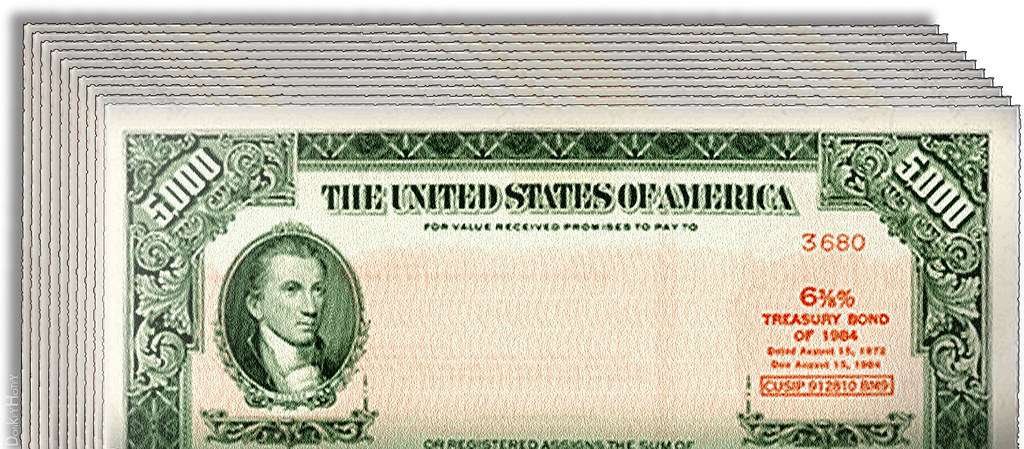An entry into the security world of Treasury bonds and bills is a confirmation of an investor being able to get financial stability. Moreover, they have been looking for within their portfolios. Regardless of whether you are a middle-aged investor or not, the following guide will help you understand price formation in those markets better. When we explore each single aspect in a detailed manner, you will be able to possess decision-making ability. You can make a perfect investment portfolio by acquiring knowledge of Treasury funding mechanisms.

What are Treasury Bonds?
Let’s begin by examining in great depth Treasury bonds, which may contain the core part of the government’s debt-raising strategy. Such long-term instruments range from the standard maturity of 10 to 30 years.
They have been regarded by market operators as the lynchpins of financial stability. It is their innate characteristic of enabling investors to get interest income in a consistent and scheduled way.
It is impossible to correctly assess the role of a Treasury bond without knowing how it is made. Interestingly, these are always offered in the $100 (or $200) and higher denominations, betraying their accessibility to a broad range of savers, investors, and traders. Indeed, bonds are quite lucrative due to their yields being comparably more significant than what other short-term securities offer. This feature means that these units enjoy the continual interest of people seeking secure and long-term investment options, as well as regular income.
What are Treasury bills?
On the contrary, Treasury bills, or T-bills, differ from the long-term commitment that Treasury bonds have. However, T-bills provide a timely and attractive investment option with short-term exposure.
These bills are entered into the market with maturities up to one year. T-bills are discounted at a price lower than their FV, thus giving existing and potential investors an earned FV upon maturity.
In T-bills, the issuance at a discount points to a method through which returns are being created, while at the same time, the redemption at face value on maturity indicates a pattern for making profits. Through this discount mechanism, T-bills are incredibly liquid, and thus they are a secure asset for investors who are seeking remedies during market chaos.
The source of the income stream from T-Bills is predetermined, making this the perfect vehicle for those who require a shorter-term investment with less risk.
Treasury Direct:
This is a preferable approach for those who want to be direct investors, and it turns out that US DB Treasury provides an online, user-friendly platform. By doing so, the website eases the process of purchasing, managing, and cashing in Treasury bonds from the government itself. One main attraction of Treasury Direct is that it provides investors with access to multiple types of Treasury products. These products might include fixed-gains bonds, bonds, bills, and Treasury inflation-indexed securities (TIPS), all in one place. These are the US government’s financial instruments.
The Treasury Direct account setup process is not complicated, and it does not require you to spend money. Consequently, it opens up an opportunity for a large number of investors to maintain the account. The platform offers users uncomplicated techniques of searching, filtering, and appreciating the information.
Moreover, it determines current interest rates, auction dates, and historical results of auctions. The pro-active and transparent culture creates a level playing field for the investors. They are empowered to approach and receive correct information, make informed decisions based on it, and seize opportunities within the Treasury market.
Treasury Auctions:
Treasury auctions establish the most important channel through which the government offers them to public investors buying new Treasury bills. These auctions, conducted frequently, cover a whole kaleidoscope of participants, such as individuals, funds, and foreign governments. Consequently, the core of the whole coalition lies in the mechanism of competition.
Investors taking part in a Treasury auction have to submit their bids, which have two parts. The first part is an indication of the amount of securities, while the other is an amount of yield that one is ready to accept.
The auction has both competitive and non-auctioning forms of bidding. In the first kind, investors designate the return they prefer. But in the second, investors make a commitment to accept whatever return is set by the bidding procedure. Investment-caliber months to get access to government bond issues at attractive yields through participating in Treasury auctions.
Catering for bidding schemes is the prerequisite for successful investors to actualize maximum returns through these increasingly dynamic mechanisms.
Transferring Treasuries:
Administrating control over US Treasury holdings becomes more interesting with the ability to transfer securities. The securities are transferred between separate accounts or common persons through Treasury Direct. Thus, by way of this simplified process, individual investors are allowed to perform all storage operations. As well as, it gives securities to other members of their families, whether they are global or not.
The investor system may be kicked off by submitting the transactions through the user-friendly Treasury Direct website. Dividers have the choice of transferring all or part of the security and are able to fulfill individual portfolio management needs. Transferability of Treasuries piles up on liquidity and usefulness. Investors are able to develop plans for their portfolios and implement the changes as needed.
Other Ways to Buy Treasuries:
Including programmatic interventions, instruction, outreach efforts, and collaborations with local partners represents a multifaceted approach.
Treasury Direct and auctions, however, are the main means through which Treasury security is acquired. The investor has other options at his disposal as well. Banks, brokers, and mutual funds also provide opportunities for inserting Treasury securities into different products that are designed for investment.
Financial centers typically offer Treasury securities as a product, carrying the responsibility of assisting investors to lessen the risk of their investment portfolios. Investors derive extra benefits besides the usefulness of Treasury securities and the availability of brokers and mutual funds.
These additional benefits include access to investment management skills, ease of managing investments, and diversification of assets. On the one hand, investors should know about the underlying fees and commissions. But on the other hand, they have numerous options available for investing.
Conclusion:
Every investor has their own unique financial goals, so developing a comprehensive investment approach tailored to their needs is imperative.
By investing in government Treasury bonds and bills, an investor could diversify his or her income sources. Therefore look forward to some stability in his or her earnings. Whether investors choose to invest in Treasury Direct, buy directly from Treasury auctions, or pursue indirect options, it is important to be familiar with the intricacies of purchasing Treasury securities. The understanding of these proceeds will be the cornerstone of an effective investment strategy.
Through the last, this detailed guide informs investors with the right to know how to buy Treasury bills and bonds with confidence. The ability to chunk into bite-sized lessons enhances the comprehension of investors of different levels. Now investors can make their decisions based on new knowledge. From the basics to more intricate details, the diverse avenues explored ensure a comprehensive grasp of these valuable government securities.
However, both experienced and first-time investors can count on Treasury bonds and bills as a reliable and multilevel platform for accomplishing their financial objectives.
FAQs:
Who can buy Treasury bonds and bills?
Treasury securities use a secondary market, enabling all types of investors, even non-institutional ones, to access them, like individual investors or foreign governments. This inclusivity fosters diversity within the Treasury market.
What are the costs associated with buying Treasury securities?
Purchasing directly from the government through Treasury Direct is fee-free. However, transaction fees may be charged every time investors hire banks, brokers, or mutual funds to hold Treasury securities for the investors. Understanding these costs is vital for optimizing investment returns.
What are the tax implications of owning Treasury securities?
Interest income from Treasury securities is subject to federal income tax but is exempt from state and local taxes. Furthermore, an instrument called treasuries benefits from an exemption in inheritance, state, estate, and local taxes. Collaborating with a tax advisor ensures investors navigate these implications effectively.




